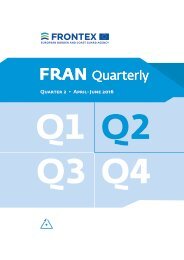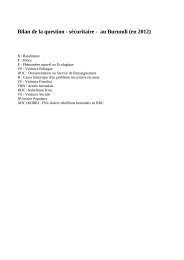You also want an ePaper? Increase the reach of your titles
YUMPU automatically turns print PDFs into web optimized ePapers that Google loves.
MOKHTAR AWAD<br />
operated mainland networks that were all but destroyed in 2014; in 2015,<br />
these networks were reactivated, and they attempted and carried out attacks<br />
that mainly targeted tourists, foreign nationals, and Western interests. In late<br />
2015, IS-affiliated cells operating in Greater Cairo began to launch armed<br />
assaults and IED attacks in populated areas and against tourists. Thankfully,<br />
due to the operatives’ amateur capabilities, fatalities have been low. They have<br />
demonstrated, nevertheless, an interest in planting IEDs on Cairo’s beltway,<br />
which shows a most certain disregard for potential civilian casualties. This,<br />
too, is a radical departure from the focus of mainland-based militants before<br />
the IS intervention. At minimum, the nature of the attacks shows how these<br />
operatives have fully accepted the IS ideology and tactics; or perhaps it is an<br />
indication of greater direction by IS core leadership, which has less interest<br />
in nurturing the base of popular support for mainland militants and more in<br />
taking advantage of Egypt as another theater into which to project its terror.<br />
IS Sinai and IS Libya have also facilitated increased activity in the Egyptian<br />
Western Desert. In fact, the first-ever attack there, which took place in<br />
July 2014, appears to have been connected to the group’s discussions with IS,<br />
which were ongoing at the time. It was carried out by an expeditionary force<br />
that struck the Farafra checkpoint before moving up to Marsa Matruh, then<br />
back east on the way to Sinai, suggesting the group had no sustained operational<br />
presence then in the Western Desert. The purpose was, perhaps, to<br />
show the group’s ability to hit well outside the Sinai or, more likely, to show<br />
it could operate in an area of strategic significance for IS. Since then, smuggling<br />
activity has increased, as well as reports of small jihadist encampments.<br />
Securing the smuggling routes between Libya and Sinai and having strategic<br />
depth into the Western Desert may benefit IS Sinai, but it serves the interests<br />
of core IS more.<br />
ACTUAL LINKAGES<br />
The full extent of core IS direct operational control over IS Sinai activities<br />
remains unknown. Travel to and from the Sinai remains rather difficult, and<br />
Egyptian authorities have yet to capture any senior non-Egyptian IS leaders<br />
there. What is known is that sometime in fall 2014, some of the local<br />
group’s leaders traveled to meet core IS leaders in Syria and Iraq, something<br />
confirmed by Egypt’s General Intelligence. There are also indications that the<br />
connection between Sinai and core IS grew as Egyptians who fought alongside<br />
IS began to return, some of them perhaps carrying messages and orders<br />
from senior IS leaders.<br />
16






